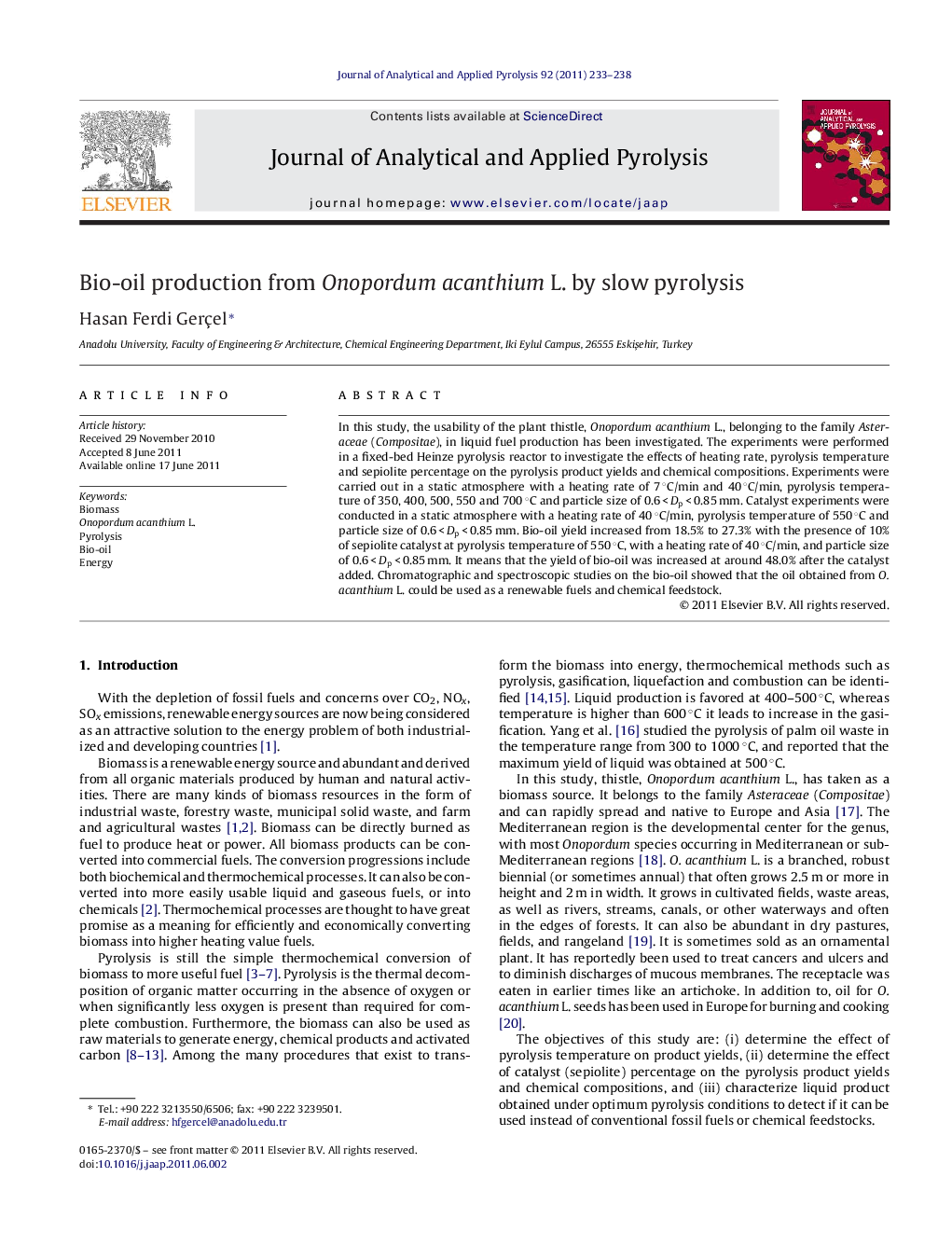| Article ID | Journal | Published Year | Pages | File Type |
|---|---|---|---|---|
| 1197879 | Journal of Analytical and Applied Pyrolysis | 2011 | 6 Pages |
In this study, the usability of the plant thistle, Onopordum acanthium L., belonging to the family Asteraceae (Compositae), in liquid fuel production has been investigated. The experiments were performed in a fixed-bed Heinze pyrolysis reactor to investigate the effects of heating rate, pyrolysis temperature and sepiolite percentage on the pyrolysis product yields and chemical compositions. Experiments were carried out in a static atmosphere with a heating rate of 7 °C/min and 40 °C/min, pyrolysis temperature of 350, 400, 500, 550 and 700 °C and particle size of 0.6 < Dp < 0.85 mm. Catalyst experiments were conducted in a static atmosphere with a heating rate of 40 °C/min, pyrolysis temperature of 550 °C and particle size of 0.6 < Dp < 0.85 mm. Bio-oil yield increased from 18.5% to 27.3% with the presence of 10% of sepiolite catalyst at pyrolysis temperature of 550 °C, with a heating rate of 40 °C/min, and particle size of 0.6 < Dp < 0.85 mm. It means that the yield of bio-oil was increased at around 48.0% after the catalyst added. Chromatographic and spectroscopic studies on the bio-oil showed that the oil obtained from O. acanthium L. could be used as a renewable fuels and chemical feedstock.
